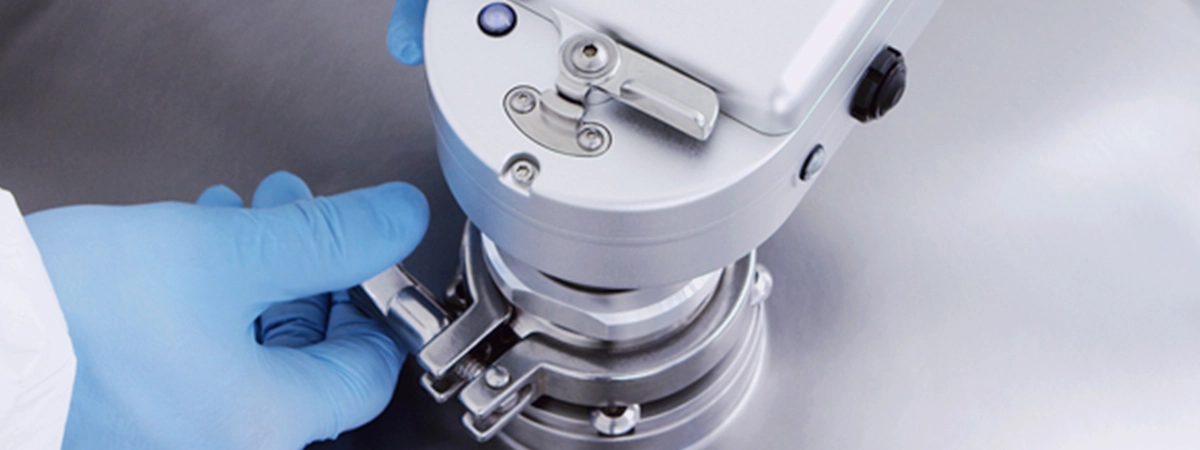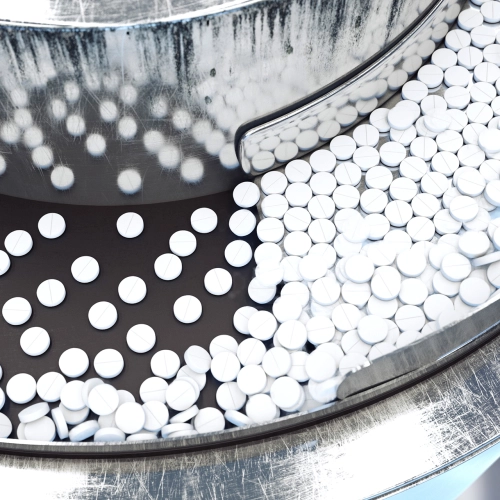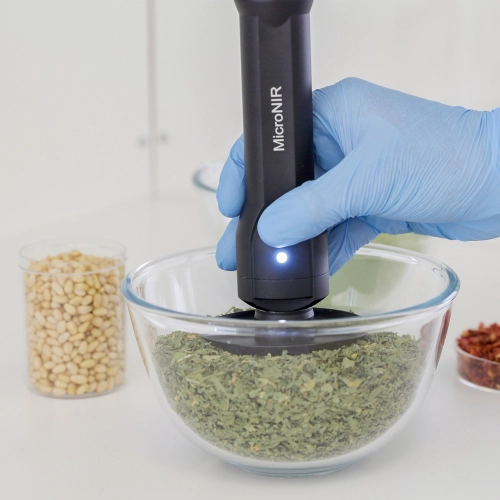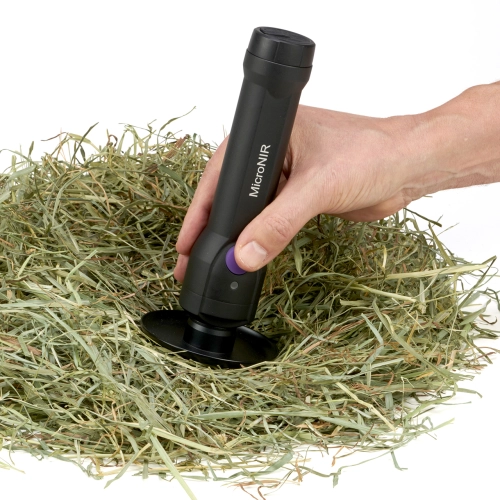NIR Spectroscopy
Fast and Flexible NIR Materials Analysis for the Field and Factory
Compact, Robust Near Infrared Spectrometers
Based on the proprietary VIAVI Linear Variable Filter (LVF) technology, originally developed for NASA interplanetary spacecraft, each MicroNIR instrument is fit-to-purpose, whether the near infrared spectroscopy application is handheld use in the sugar cane field, law enforcement, or process use monitoring in a pharmaceutical manufacturing plant.
Our versatile handheld instrument is designed for a wide range of field applications, from identifying illicit materials on the street to analyzing the nutritional content of milk and cheese.
Our line of process analytical (PAT) instruments are designed to seamlessly integrate with existing and process controller in manufacturing equipment, to deliver tighter process control and actionable insight, improving quality, optimizing cycle time, and reducing cost.
With no moving parts, no free space optics, no fibers, and no maintenance requirements, MicroNIR instruments are built for the long haul, and deliver unmatched near infrared spectroscopy performance, with a low total cost of ownership. Read on to find out about the many ways VIAVI customers are using MicroNIR instruments to bring the benefits of lab-quality NIR spectroscopy to a wide range of industries and markets.
NIR Spectroscopy for Every Application
Pharmaceutical manufacturing is demanding. The need to diligently protect patient health and well-being is always primary, and the need to minimize risk oftentimes conflicts with manufacturers’ desire to make advantageous process improvements. At the same time, the obligations of USP and EP compliance can push manufacturers into costly and time-consuming processes that challenge their organization’s obligation to deliver profit to shareholders. In response to that challenge, scientists and process engineers have been migrating traditional batch-processing of drugs to leaner methods and, increasingly, to continuous or semi-continuous processes. Key to all these trends is PAT – Process Analytical Technology – as a means to increase quality and productivity and gain critical process insights that inform additional innovation. . Near infrared spectroscopy applications in pharmaceutical analysis have proven to be powerful tools in the PAT ecosystem because they provide critical analytical information while being minimally invasive, non-destructive, and fast.
Learn More...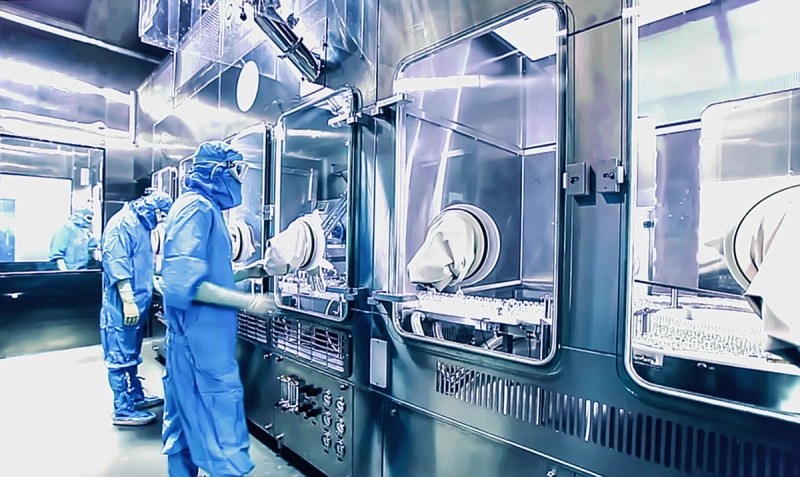

Food quality and safety could not be more critical than in today’s world. With chronic food shortages, fraud, and adulteration often populating the headlines, food producers and processors are increasingly turning to LEAN principles to manage every step from the farmer’s field to the store shelves. By its nature, NIR spectroscopy in food analysis is perfectly suited to address needs throughout the supply chain. NIR spectrophotometers are designed to sample non-destructively and, in many cases, non-invasively as well. NIR for food analysis promotes rapidly results enableand on-the-spot decision-making.
Learn More...Agricultural products and their derivatives are a key and critical element in the global food supply chain. High quality food can only be produced by healthy, well-nourished plants and animals. The quality and nutritional value of forage, for example, varies widely from region to region and season to season, so properly nourished livestock and poultry requires supplementary feeds.Near infrared spectroscopy in agriculture is a powerful tool for assessing the nutritional attributes of a given forage so the right supplements can be chosen to produce a balanced diet. NIR spectroscopy in agriculture allows the nutritional attributes of the supplements to be monitored and measured during production and at any point in the supply chain.
Learn More...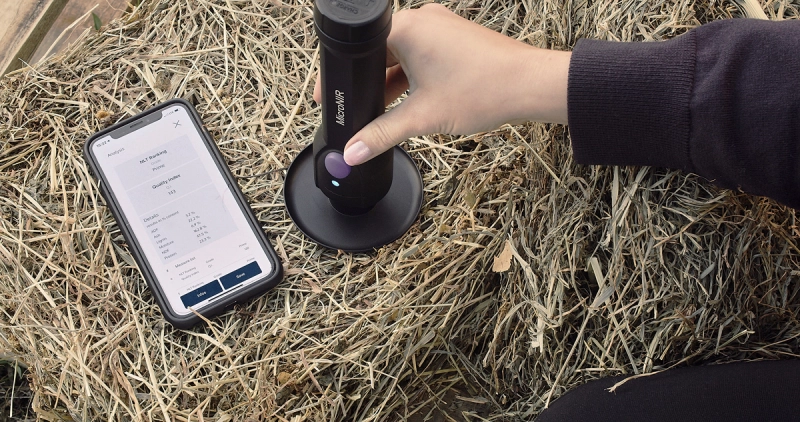

NIR spectroscopy applications are widespread and diverse in the chemical industry. The same advantages that make infrared spectroscopy in food analysis and pharmaceutical manufacturing invaluable apply to the processing of petrochemicals, polymers, and fuels. Real-time monitoring of critical attributes allows the process engineer to develop robust processes that are tightly-controlled, well-understood, and as efficient as they can be. Insights gained during process development can directly indicate the causes and remedies for process perturbations, reducing waste, downtime, and cost.
Learn More...All new products start somewhere. Often, “somewhere” is the research laboratory, whether academic, institutional, or industrial. MicroNIR instruments are widely used in the early stages of new product and process development, to deepen understanding and point the way to the most effective and efficient process pathways. The MicroNIR 1700ES is designed with the flexibility and adaptability required by new product and process developers. It is roughly the size of a golf ball and is supported by a range of accessories that adapt it to virtually any use. When the research is complete and the product is ready to scale up, chemometric models developed during research can be directly implemented in production, owing to the exceptional unit-to-unit consistency of every MicroNIR instrument. All of the knowledge and insight gained in research is then available to manufacturing engineers, simplifying and accelerating the scale-up of a stable and robust manufacturing process.
Learn More...
What is NIR Spectroscopy?
The concept behind near infrared spectroscopy is based on the Beer-Lambert Law, which defines the concentration of certain chemical compounds based on the amount of NIR light that they absorb. Light in the NIR spectrum interacts with OH, NH, and CH bonds, causing some of the energy spectrum to be absorbed. By illuminating the sample and accurately measuring the spectrum reflected back to the NIR analyzer, the chemical composition can be determined. The chemometrics used in NIR Spectroscopy convert this spectral data into actionable information to help optimize processes, ensure consistency, or detect dangerous conditions. The nature of NIR Spectroscopy technology allows samples with irregular surfaces to be analyzed with acceptable alignment with laboratory, time consuming and costly analyses.
Along with being cost-effective, easy to use, non-destructive, and applicable to a wide variety of industries and applications, near infrared spectroscopy also produces no chemical waste byproducts. Unlike other methods, NIR spectroscopy is used to characterize both chemical and physical parameters. Additional advantages of NIR spectroscopy include:
- Rapid testing: NIR is faster than comparable analysis methods, making NIR suitable for in-line quality control applications.
- Versatility: The hydrogen-bonded materials detected through NIR spectroscopy are found in most organic and some inorganic compounds. NIR can also be applied to samples in solid, liquid, or gaseous form with equal precision.
- No contact: thanks to the transparency of glass and sapphire in the near infrared, sanitary flanges equipped with a sight glass allows no-contact between the material and the instrument, cleaning and sterilization in place, absence of contamination and exposure to potentially toxic compounds.
Plotting the light absorption at various wavelengths (the spectrum) allows the NIR spectra to reveal relevant molecules and substances presence and concentration. For example, water (H2O) typically absorbs NIR wavelengths in the 1400nm and 1950nm ranges, while benzene (CH) absorbs wavelengths in the 1700nm range; by keeping other variables under control, the higher the intensity of the absorption, the higher the concentration of such material will be. As well as, spectral shifts in absorbance can correlate to particle size variation Unlike mid infrared (also known as FT-IR) and Raman where the spectral range determines how much information on the molecular structure and crystallinity of a certain material is obtainable, the near infrared spectrum is a repetition of resonating harmonics of fundamental absorptions defined as first, the most intense, second and third overtones. Spectral range is therefore less relevant in Near infrared spectroscopy and most measurements can be performed in the second overtone range, without the need for bulky, costly optics incorporating electrically cooled detectors. While similar test methods work by exciting atoms within a chemical element, NIR spectroscopy impacts entire molecules, causing them to vibrate, stretch, shrink, and bend in patterns that become recognizable when the light absorption patterns are evaluated.
Research-grade NIR instruments usually offer wide spectral range, high spectral resolution, and the highest sampling flexibility to adapt to various form and shape of solid and liquid materials however, these instruments are not designed to withstand dust, moisture, vibrations, or a wide range of temperature; the weight and size does not fit the need for portability, or of any application where “bringing the lab to the sample” is a must. VIAVI has developed a wide range of handheld, in-line, and ultra-compact NIR spectrometers to address the needs of every application and industry. The versatile MicoNIR product line includes:
- Ruggedized PAT-W and PAT-Wx NIR spectrometers intended for commercial processing applications in the pharmaceutical, chemical, and food industries.
- Handheld MicroNIR Tablet Probes for rapid tablet, pill, kernel, and seed analysis in the lab.
- Battery-powered OnSite-W solutions designed for the field or manufacturing floor.
- Ultra-compact, USB-powered PAT-U NIR analyzers for quality by design (QbD) manufacturing applications.
Let Us Help
We’re here to help you get ahead.
